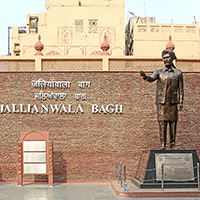Jallianwala Bagh Massacre
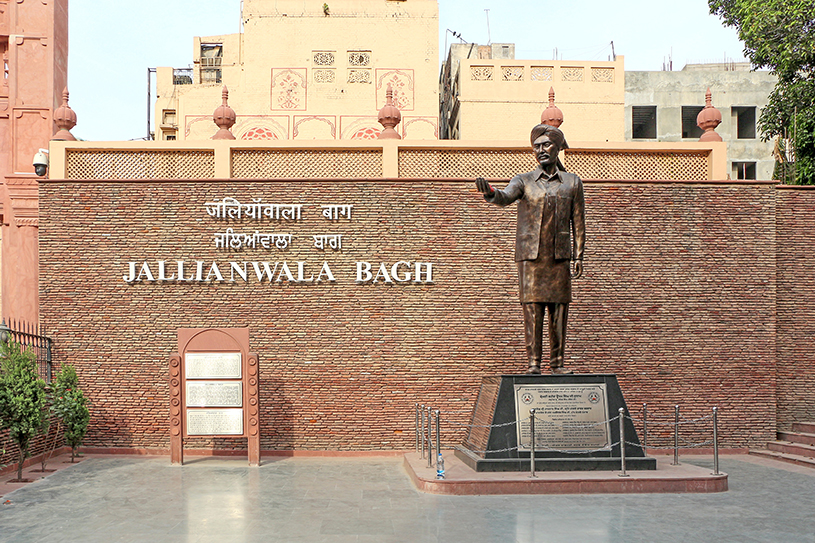
| Editor’s Note
April 13, 1919, will be the date Indians of my generation will never forget. If the younger generation does not know or does not remember, I would like to remind them through this article. It was the day when the Jallianwala Bagh massacre occurred and more than 500 innocent men, women, and small children died because of the evil British Empire. I am not sure why every Indian and Indian Media outlet all over the world is not talking about it the same way every Jewish person and their media talks about the Holocaust. Raj Shah Managing Editor |
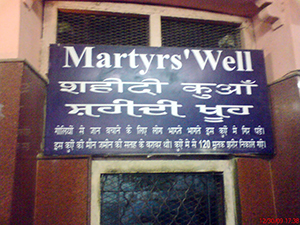 INTRODUCTION
INTRODUCTION
The Jallianwala Bagh massacre, also known as the Amritsar massacre, marked a turning point in India’s struggle for Independence. A memorial was set up by the Government of India in 1951 at Jallianwala Bagh to commemorate the spirit of Indian revolutionaries and the people who lost their lives in the brutal massacre.
It stands as a symbol of struggle and sacrifice and continues to instill patriotism amongst the youth. In March 2019, the Yaad-e-Jallian Museum was inaugurated, showcasing an authentic account of the massacre.
POLITICAL BACKDROP
The massacre of April 1919 wasn’t an isolated incident, rather an incident that happened with a multitude of factors working in the background. To understand what transpired on April 13, 1919, one must look at the events preceding it.
The Indian National Congress had assumed self-governance would be granted once WWI ended, but the Imperial bureaucracy had other plans.
The Rowlatt Act (Black Act) was passed on March 10, 1919, authorizing the government to imprison or confine, without a trial, any person associated with seditious activities. This led to nationwide unrest. Gandhi initiated Satyagraha to protest against the Rowlatt Act. On April 7, 1919, Gandhi published an article called “Satyagrahi” describing ways to oppose the Rowlatt Act. The British authorities discussed amongst themselves the actions to be taken against Gandhi and any other leaders who were participating in the Satyagraha. Orders were issued to prohibit Gandhi from entering Punjab and to arrest him if he disobeyed the orders.
Sir Michael O’ Dwyer, the Lieutenant Governor of Punjab (1912-1919), suggested that Gandhi be deported to Burma, but this was opposed by his fellow officials as they felt it might instigate the public. Dr Saifuddin Kitchlew and Dr Satyapal, the two prominent leaders who were a symbol of Hindu-Muslim unity, organized a peaceful protest against the Rowlatt Act in Amritsar.
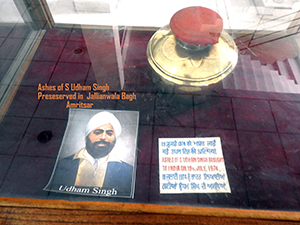
On April 9, 1919, Ram Navami was being celebrated when O’ Dwyer issued orders to the Deputy Commissioner, Mr. Irving, to arrest Dr Satyapal and Dr Kitchlew.
The following extract from the Amrita Bazar Patrika, dated 19th November, 1919, talks about the witness account of Mr. Irving in front of the Hunter Commission and highlights the mindset of the British authorities:
“He (Irving) was directed by the Government of Sir Michael O’Dwyer to deport Dr Kichlew and Satyapal. He knew that such an act would lead to a popular outburst. He also knew that none of these popular leaders favoured violence. He invited the two gentlemen to his house on the morning of April 10th and they unsuspectingly responded to the call no doubt relying on his honour as an Englishman. But after they had been under his roof for half an hour as his guests, they were caught hold of, and removed towards Dharmasala under police escort! Mr Irving told this story without showing any sign of having done an act which very few Englishmen would care to do.”
On April 10, 1919, the infuriated protestors marched to the Deputy Commissioner’s residence to demand the release of their two leaders. Here they were fired upon without any provocation. Many people were wounded and killed.
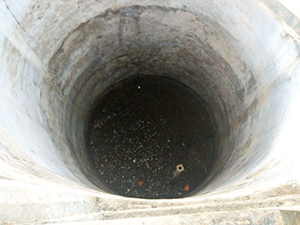
The Martyr’s Well – This well, located inside the premises of the Jallianwala Bagh, stands testimony to the brutal killings of innocent who jumped into it in panic to save themselves from the firing. 120 dead bodies were later recovered from the well.
After passing the Rowlatt Act, the Government of Punjab set out to suppress all opposition. On April 13, 1919, the public had gathered to celebrate Baisakhi at Jallianwala Bagh, where two resolutions were to be discussed, one condemning the firing on April 10 and the other requesting the authorities to release their leaders.
When the news reached him, Brigadier General William B. Dyer III headed to the Bagh with his troops. He entered the Bagh, deployed his troops, and ordered them to open fire without giving any warning. People rushed to the exits, but Dyer directed his soldiers to fire at the exit. The firing continued for 10-15 minutes. There were 1,650 rounds fired. The firing ceased only after the ammunition had run out. The total estimated figure of dead as given by General Dyer and Mr Irving was 291. However, other reports, including that of a committee headed by Madan Mohan Malviya put the figure of dead at over 500.
POST JALLIANWALA BAGH
Two days after the massacre, Martial Law was clamped down on five districts – Lahore, Amritsar, Gujranwala, Gujarat, and Lyallpore. The declaration of Martial Law was to empower the Viceroy to direct immediate trial by court-martial of any person involved in the revolutionary activities. As the news of the massacre spread across the nation, Tagore renounced his knighthood.
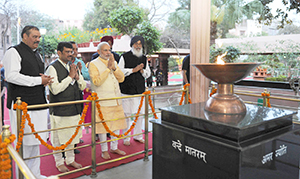 HUNTER COMMISSION
HUNTER COMMISSION
On October 14, 1919, the Disorders Inquiry Committee was formed to inquire about the massacre. It later came to be known as the Hunter Commission. The Hunter Commission was directed to announce their verdict on the justifiability, or otherwise, of the steps taken by the government. All the British officials involved in the administration during the disturbances in Amritsar were interrogated including General Dyer and Mr. Irving.
The following extract shows Dyer’s unapologetic attitude towards the massacre:
Question – After firing took place, did you take any measures to attend to the wounded?
Answer – No, certainly not. It was not my job. Hospitals were open and they should have gone there.
General Dyer’s actions on the day of the Massacre received a prompt acknowledgement from Sir Michael O’Dwyer who at once wired to him: “Your action is correct. Lieutenant Governor approves.” Both Dyer and O’Dwyer faced violent criticism from various newspapers which gave their own accounts of the brutal massacre. The evidence General Dyer presented before the Hunter Committee stood as a confession of the brutal act he committed.
The Committee indicated the massacre as one of the darkest episodes of the British Administration.
The Hunter Commission in 1920 censured Dyer for his actions. The Commander in Chief directed Brigadier General Dyer to resign from his appointment as Brigade Commander and informed him that he would receive no further employment in India as mentioned in the letter by Montagu to his Excellency.
O’ DWYER’S ASSASSINATION
On March 13, 1940, at Caxton Hall in London, Udham Singh, an Indian freedom fighter, killed O’Dwyer who had approved of Dyer’s action and was believed to have been the main planner in the incident. Thus, Jallianwala Bagh was the initial spark that led to the Independence of India. It was a tragedy for both the sufferers and the colonial rulers. It revealed a fatal flaw in their assumptions and attitudes. Eventually, it led to their departure from the land which they had hoped to rule for centuries.

